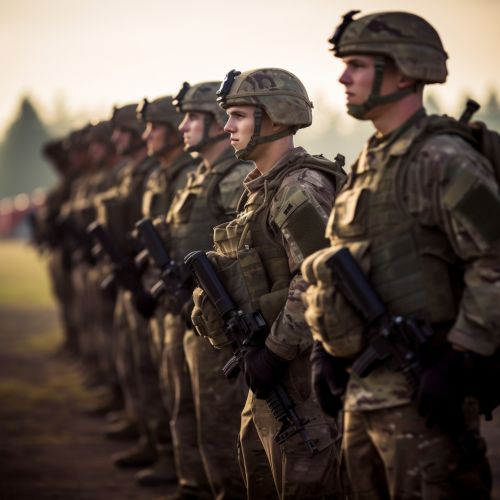Collective defense
Overview
Collective defense, also known as collective security, is a strategy employed by nations to protect themselves against potential threats. It is based on the principle that any aggression against one member is considered as an aggression against all members. This concept is often formalized through treaties and alliances, such as the NATO or the UN.
History
The concept of collective defense has its roots in the alliances formed by ancient city-states and kingdoms. However, it was not until the 20th century that the idea was formalized on a global scale. The League of Nations, established after World War I, was the first international organization aimed at maintaining world peace through collective defense. Despite its failure to prevent World War II, the concept was further developed and institutionalized in the UN and NATO.
Principles
The main principle of collective defense is that an attack against one member is considered an attack against all. This principle is often formalized in treaties, which specify the obligations of the member states in case of an aggression. The collective response can take various forms, from diplomatic protests and economic sanctions to military intervention.
Mechanisms
The mechanisms of collective defense can be complex and vary depending on the specific treaty or alliance. However, they generally involve a decision-making process to determine whether an act of aggression has occurred and what response is appropriate. This process often involves consultations among member states, assessments of the situation, and voting procedures.
Criticisms and Controversies
Collective defense has been subject to various criticisms and controversies. Some argue that it can escalate conflicts and lead to unnecessary wars, while others question its effectiveness in deterring aggression. There have also been debates about the obligations of member states, the decision-making processes, and the enforcement of collective defense measures.
Case Studies
Several case studies illustrate the application and challenges of collective defense. These include the Korean War, the Suez Crisis, and the NATO intervention in Kosovo. Each case presents unique circumstances and outcomes, providing valuable insights into the complexities of collective defense.
Future Perspectives
The future of collective defense is uncertain and depends on various factors, such as geopolitical shifts, technological advancements, and changes in international law. However, it is likely to remain a key strategy for nations to protect their security and sovereignty in an increasingly interconnected and unpredictable world.


